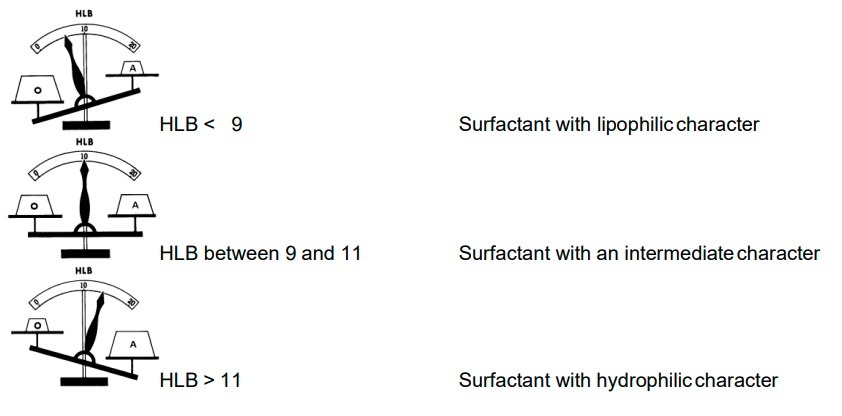HLB – How to choose an emulsifier?
The HLB number constitutes an indicative measure of the Hydrophile Lipophile Balance of the emulsifier and allows predictions to be made as to whether, overall, the molecule has a mainly hydrophile or lipophile character. A scale of values between 0 and 20 inclusive can be divided into the following groups of surfactants.

If an emulsifier with a particular HLB value stabilizes an emulsion with a certain type of oil, then another emulsifier with the same HLB number generally has the same emulsifying effect. Every type of oil therefore requires an emulsifier system with a certain HLB number, this value constitutes the required HLB of the oil phase. The balance between the lipophilic and hydrophilic properties of the surfactant also affect its solubility or dispersal in water.
Therefore, an indication of the HLB value of a surfactant can be provided by its behavior in water.
| No dispersion | HLB = 1 – 4 |
| Poor dispersion | HLB = 3 – 6 |
| Unstable milky dispersion | HLB = 6 – 8 |
| Stable milky dispersion | HLB = 8 –10 |
| Clear opalescent dispersion | HLB =10 –13 |
| Clear solution | HLB >13 |
The properties and therefore the uses of a surfactant are classifiable on the basis of the HLB number.
| WO emulsifier | HLB = 4 – 6 |
| Wetting agent | HLB = 8 – 13 |
| OW emulsifier | HLB = 8 – 18 |
| Detergent | HLB = 13 – 15 |
| Solubilizing agent | HLB = 10 – 18 |
Solubilizers are surfactants with a definite hydrophilic character that are capable of transporting into aqueous solution substances that are normally poorly soluble or insoluble. The phenomenon of solubilization differs from that of solution in that, in the first case the component to be solubilized is dispersed inside the solubilizing surfactant micelle, while in the case of a true solution, the solute is dispersed molecularly in the solvent.
